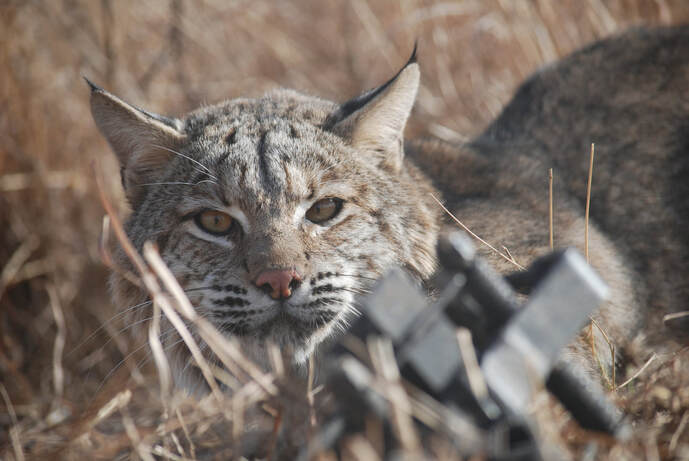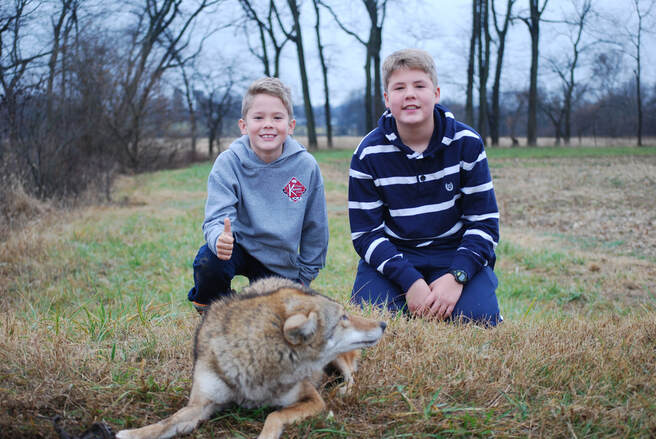|
Author: Greg Staggs I’m a trapper. Let me clarify: I’m a HARD-CORE trapper. For many, that elicits a wide range of emotions right off the bat. There isn’t hardly an outdoor activity as misunderstood as trapping. Many people have very preconceived notions of what trapping is – and what it isn’t. Largely, that’s due to one of two things: First, let’s be brutally honest – trapping is a dying art. There’s almost nothing in the outdoor spectrum that takes as much work, as much attention to detail, and as much unmitigated discipline as trapping does. Let’s face it; in today’s “microwave society”, we outdoorsmen like success to come quickly – and easily. It’s one of the reasons food plots are a multi-million dollar industry in the world of deer hunting; it sure is a whole lot easier to sit in an elegant box blind overlooking a lush green field as opposed to diving in to the undergrowth and emerging with briar cuts across your face and cheeks. Trapping puts you on the ANIMAL’s terms more than anything else out there – not yours. Secondly, it’s been the easiest for animal-rights activists and PETA-type wackos to attack thus far. Because the numbers of actual trappers are dwindling, there’s more and more people in our country who are truly ignorant of both the skillset it takes to catch a target animal, and what actually happens when you do. That makes it very easy to misconstrue the truth and spread false propaganda. In other words, it makes it very easy to spread lies about trapping. Ever heard the old adage that you don’t know what you don’t know? Or even better, as the great Will Rogers said: “It’s not what we don’t know that hurts. It’s what we know that ain’t so.” First off... Let's dispel the absolute lie that the liberal Hollywood media has put out there that this activity is cruel and that the animal is "in pain." Those who are ignorant of the actual facts because they've never participated in the activity are easily misled by those who wish to "humanize" or personify animals to the point where they have feelings akin to people. And… yes, I chose the word “ignorant” carefully. Many of the animals I approach in my traps are lying quite peacefully – and more than a few have been sound asleep upon my arrival. The act of being caught in a trap – while surprising – is not overtly painful. I speak from absolute experience – not out of ignorance, nor from taking “the word” of those with agendas who wish to misconstrue facts and promulgate blatant lies and falsehoods, staging videos and photos to accommodate their platform. How do I know? I’ve caught myself many times. All trappers will, and do. Twice last month, as a matter of fact. Trappers, probably above all outdoorsmen, are more connected with the animals they target. We study the animal intently, learning every nuance. Its place in nature’s food chain. Its habits. How it traverses the territory it calls home. Where it likes to sleep, and where it most commonly defecates. Why it steps here, and not there. We respect the animal like you have no idea how to respect it. That’s why none of us would neither embark upon nor enjoy an activity which was “cruel” to the animals we both admire and respect so much. Those who choose to trap water-dwelling creatures ensure their traps instantly and humanely dispatch the animal. As a land trapper who target predators, my traps merely hold an animal in place, allowing it to swivel freely so as not to damage its limbs or joints. I can then choose to release an animal due to its sex (as stewards of the land, we often choose to release females of a species which isn’t as populated as we’d like) or size. In the event of a non-target catch, such as a dog or cat, the animal can go about his way – hopefully learning the lesson to stay in its yard and not trespass, or I wouldn’t have caught it in the first place. Last week I released a beagle which was roaming an expensive deer-hunting lease I was asked to help control the predator population on; during the release, he didn’t growl, snarl or attempt to bite me. If the act was so “cruel” and “painful”, he had all the opportunity he needed to sink his teeth into me. He followed me for 10 minutes before I scolded him enough to turn him back to his home. My 8-year-old son was sitting beside me as I released him; surely, if I didn’t care about the well-being or whether the animal was suffering, I’d care about my own son being in harm’s way since this was SUCH a cruel experience for the dog and I would SURELY expect him to lash out in anger and pain as it was sitting there in the trap? Because – after all – some liberal wacko has TOLD you that it must be in pain! Think about it. If a coyote were in such excruciating pain, then the beagle would have been as well. Now here’s where we REALLY need to put on our thinking caps… If the BEAGLE wasn’t in excruciating pain, then neither is the coyote. Aside from the lie that it is cruel, trapping plays a very important role in many wildlife management programs. It helps control furbearer populations to minimize human/wildlife conflicts. Similarly, trapping contributes to the protection of endangered species by controlling their predators. Trapping also is used to relocate animals and restore populations in areas where conditions are suitable for the species to thrive. Scientists collect important ecological information about wildlife through the use of trapping. Preferred habitats, migration patterns and population indices for some species of wildlife are determined through capture and release programs and by monitoring regulated harvest. It is the trapper who is the reason Missouri has one of the most prolific turkey populations in the country. Let me ask you: Which animals do you choose over others, and why? Because when I help control the coyote, bobcat and fox populations… I am literally saving HUNDREDS of fawns and turkey poults over the coming years. By extension of those who would have been lost due to predation which would have produced offspring, it’s no small stretch of the imagination to increase that to thousands. When a raccoon or opossum stumbles upon a hen turkey’s nest full of 10-14 eggs, they destroy every single one of them. Without fail. A raccoon may find dozens of nests in a given spring. Let that sink in for a moment. Trappers help safely, humanely and efficiently control the predator population, governing over the animal kingdom as God ordained us to do – minimizing overpopulation, starvation, spread of disease, overpredation, and increasing their range into unwanted places. In addition, trapping can help reduce the exposure of rabies and other diseases to humans and pets. Trapping is widely recognized by the wildlife conservation community – including by thousands of wildlife biologists -- as a legitimate and beneficial outdoor activity. Then we come to the issue of fur being the best renewable resource God gave us for warmth. Liberal activists would have you believe you’re being a much more responsible human being if you wear fake fur. In reality, the opposite is true: synthetic fur is made from non-renewable petroleum-based products that require vast amounts of energy for extraction and fractionating. Products such as nylon, acrylic and polyester must be treated with heat and chemicals such as resins and silicones to improve its look and feel; these processes alone can use up to three times as much non-renewable energy as the production of real fur. There’s also the issue of biodegradability: if I so choose to bury my wife’s fur coat in the garden, it composts within a year or two. Nylon and polyester fake furs clog landfills for years to come once they’re discarded. All that extra processing effort adds up to double the risk of ill health due to emissions of carcinogenic substances during production, and it’s four times as harmful to eco systems because of the toxic side effects of manufacturing. After all that… you now you have one of two choices: Stop believing lies out of ignorance, because you are no longer ignorant. You have been educated by someone who lives the life and respects the animals more than you can absolutely comprehend. A trapper. Or you can bury your head in the sand, keep saying “It has to have been in pain for hours before they kill it” and ignore the truth, because now you know. Oh, you can do a quick Google search and copy and paste a staged photo from some animal-rights activist wacko who has no idea what he’s talking about. They’re out there, because it’s easy to fake and elicits a tremendous amount of emotion. Make no mistake about it: trapping is just the first front that’s being attacked. Hunting and fishing WILL be assailed in much more force once trapping is taken off the table; it’s just the first and easiest domino. As fellow sportsmen and women, you need to help stand in the gap, to fight in the trenches. Because even if you don’t trap, you’re next. For those interested in learning more about trapping predators, Greg Staggs frequently posts instructional videos on his YouTube channel, Staggs in the Wild.
2 Comments
Leave a Reply. |
AuthorsAndrew Walter Archives
December 2022
Categories
All
|




 RSS Feed
RSS Feed



